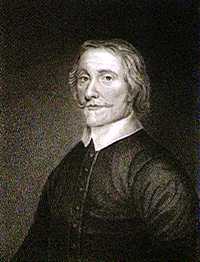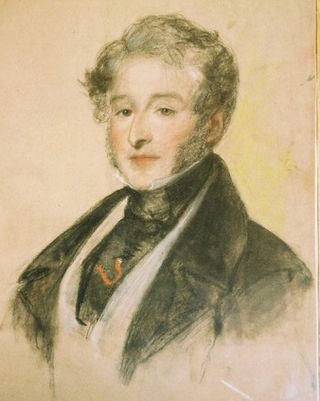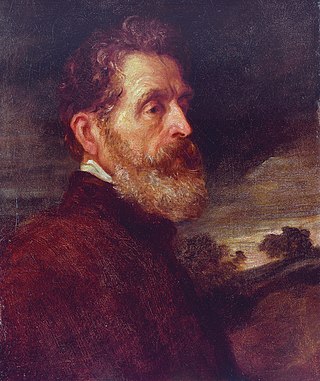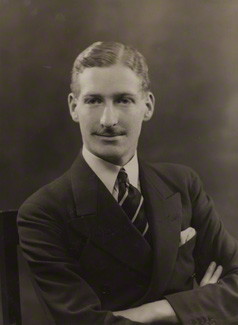
Earl of Shrewsbury is a hereditary title of nobility created twice in the Peerage of England. The second earldom dates to 1442. The holder of the Earldom of Shrewsbury also holds the title of Earl of Waterford (1446) in the Peerage of Ireland and Earl Talbot (1784) in the Peerage of Great Britain. Shrewsbury and Waterford are the oldest earldoms in their peerages held by someone with no higher title, and as such the Earl of Shrewsbury is sometimes described as the premier earl of England and Ireland.

Earl of Powis (Powys) is a title that has been created three times. The first creation came in the Peerage of England in 1674 in favour of William Herbert, 3rd Baron Powis, a descendant of William Herbert, 1st Earl of Pembroke. In 1687, he was further honoured when he was made Marquess of Powis.

Viscount Valentia is a title in the Peerage of Ireland. It has been created twice. The first creation came in 1621 for Henry Power. A year later, his kinsman Sir Francis Annesley, 1st Baronet, was given a "reversionary grant" of the viscountcy, which stated that on Power's death Annesley would be created Viscount Valentia. Annesley, a member of an influential Anglo-Irish family which descended from Newport Pagnell in the County of Buckinghamshire, was a favourite of James I, who granted him land in Ireland, notably the fort of Mountnorris in County Armagh. He was knighted in 1616, created a baronet, of Newport Pagnell in the County of Buckingham, in the Baronetage of Ireland in 1620 and Baron Mountnorris, of Mountnorris in the County of Armagh, in 1628.

Viscount Charlemont is a title in the Peerage of Ireland. It was created in 1665 for William Caulfeild, 5th Baron Charlemont.

Baron Dinevor, of Dinevor in the County of Carmarthen, is a title in the Peerage of Great Britain. It was created on 17 October 1780 for William Talbot, 1st Earl Talbot, with remainder to his daughter, Lady Cecil, wife of George Rice, a member of a prominent Welsh family. On Lord Talbot's death the earldom became extinct because he left no sons to succeed to it, while the barony of Talbot also held by him was inherited by his nephew. The barony of Dynevor passed according to the special remainder to his daughter, the second holder of the title. In 1787 Lady Dynevor assumed by Royal licence the surname of de Cardonnel in lieu of Rice.
Baron Furnivall is an ancient title in the Peerage of England. It was originally created when Thomas de Furnivall was summoned to the Model Parliament on 24 June 1295 as Lord Furnivall. The barony eventually passed to Thomas Nevill, who had married the first baron's descendant Joan de Furnivall, and he was summoned to parliament in her right. Their daughter, Maud de Neville, married John Talbot, who was also summoned to parliament in her right. He was later created Earl of Shrewsbury. On the death of the seventh earl in 1616, the barony fell into abeyance. The abeyance was terminated naturally in favour of the earl's daughter Alethea Howard in 1651 and passed through her to the Dukes of Norfolk. On the death of the ninth Duke in 1777, the barony again fell into abeyance. In 1913 the abeyance was terminated again in favour of Mary Frances Katherine Petre, daughter of Bernard Petre, 14th Baron Petre. Through her father she was a great-great-great-granddaughter of the ninth Baron Petre and his first wife Anne Howard, niece of the ninth Duke of Norfolk, who became co-heir to the Barony on her uncle's death in 1777. On Lady Furnivall's death in 1968 the barony fell into abeyance for the third time.

Major Charles Henry John Chetwynd-Talbot, 20th Earl of Shrewsbury, 20th Earl of Waterford, 5th Earl Talbot, KCVO, styled Viscount Ingestre from 1868 to 1877, was a British peer. Unusually for a wealthy nobleman of the period, he began several businesses connected with road transport, with mixed success.
William Talbot, 1st Earl Talbot, PC, styled as Lord Talbot from 1737 to 1761, was an English peer and Whig politician. Talbot was a notable figure among opposition Whig politicians during the reign of King George II before later coming to Court during the reign of his grandson, taking the office of Lord Steward of the Household.

Charles Henry John Benedict Crofton Chetwynd Chetwynd-Talbot, 22nd Earl of Shrewsbury, 22nd Earl of Waterford, 7th Earl Talbot,, styled Viscount Ingestre until 1980, is an English nobleman and the Lord High Steward of Ireland. He is the premier earl in the Peerage of England as the Earl of Shrewsbury, and in the Peerage of Ireland as the Earl of Waterford (1446). He also holds the titles of Earl Talbot and Baron Talbot.
The Lord High Steward of Ireland is a hereditary Great Officer of State in the United Kingdom, sometimes known as the Hereditary Great Seneschal. The Earls of Shrewsbury have held the office since the 15th century. Although the Irish Free State, later the Republic of Ireland, became independent in 1922, the title remained the same, rather than reflecting the region of Northern Ireland, which remains within the United Kingdom.

Cecil de Cardonnel, 2nd Baroness Dynevor was a Welsh peeress.

Talbot is an English Old French-origin surname. Notable people with the name include:

Baron Talbot is a title that has been created twice. The title was created first in the Peerage of England. On 5 June 1331, Sir Gilbert Talbot was summoned to Parliament, by which he was held to have become Baron Talbot.

Ingestre Hall is a Grade II* 17th-century Jacobean mansion situated at Ingestre, near Stafford, Staffordshire, England. Formerly the seat of the Earls Talbot and then the Earls of Shrewsbury, the hall is now owned by Sandwell Metropolitan Borough Council and is in use as a residential arts and conference centre.

Henry John Chetwynd-Talbot, 18th Earl of Shrewsbury, 18th Earl of Waterford, 3rd Earl Talbot, CB, PC, styled Viscount Ingestre between 1826 and 1849 and known as The Earl Talbot between 1849 and 1858, was a British naval commander and Conservative politician.

Charles John Chetwynd-Talbot, 19th Earl of Shrewsbury, 19th Earl of Waterford, 4th Earl Talbot, PC, styled Viscount Ingestre between 1849 and 1868, was a British Conservative politician. He served as Captain of the Honourable Corps of Gentlemen-at-Arms under Benjamin Disraeli between 1875 and 1877.

Charles Chetwynd Chetwynd-Talbot, 2nd Earl Talbot, KG, PC, FRS, styled Viscount of Ingestre between 1784 and 1793, was a British politician and slave holder. He served as Lord Lieutenant of Ireland between 1817 and 1821.

John Talbot, 1st Earl Talbot, known as John Talbot until 1782 and as The Lord Talbot between 1782 and 1784, was a British peer and politician.

John George Chetwynd-Talbot, 21st Earl of Shrewsbury, 21st Earl of Waterford, 6th Earl Talbot, styled Viscount of Ingestre from 1915 to 1921, was a British peer.
Nadine Muriel, Countess of Shrewsbury, known professionally as Nadine Talbot and later as Nadine Credi, was an English opera soprano and the first wife of John Chetwynd-Talbot, 21st Earl of Shrewsbury (1914–1980). They married in 1936.















